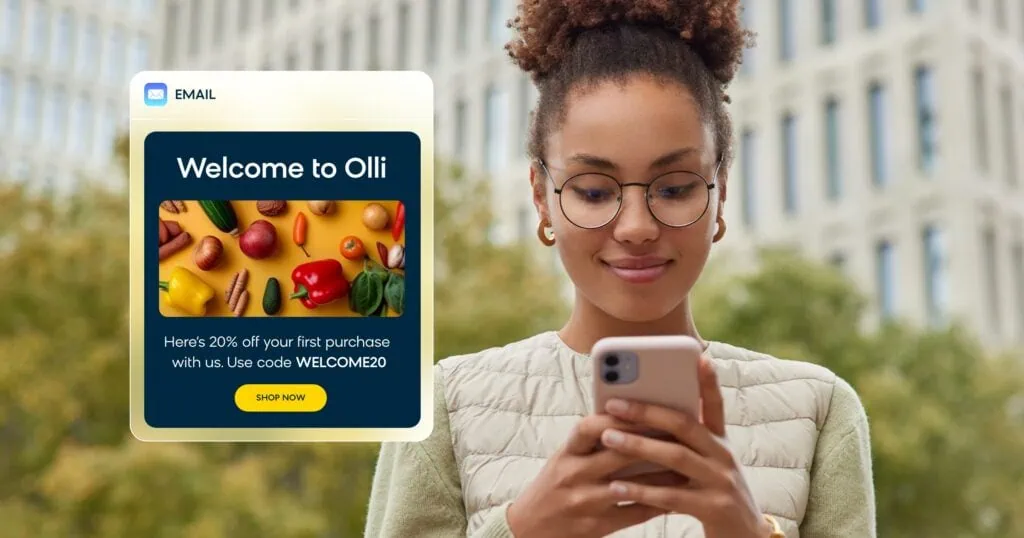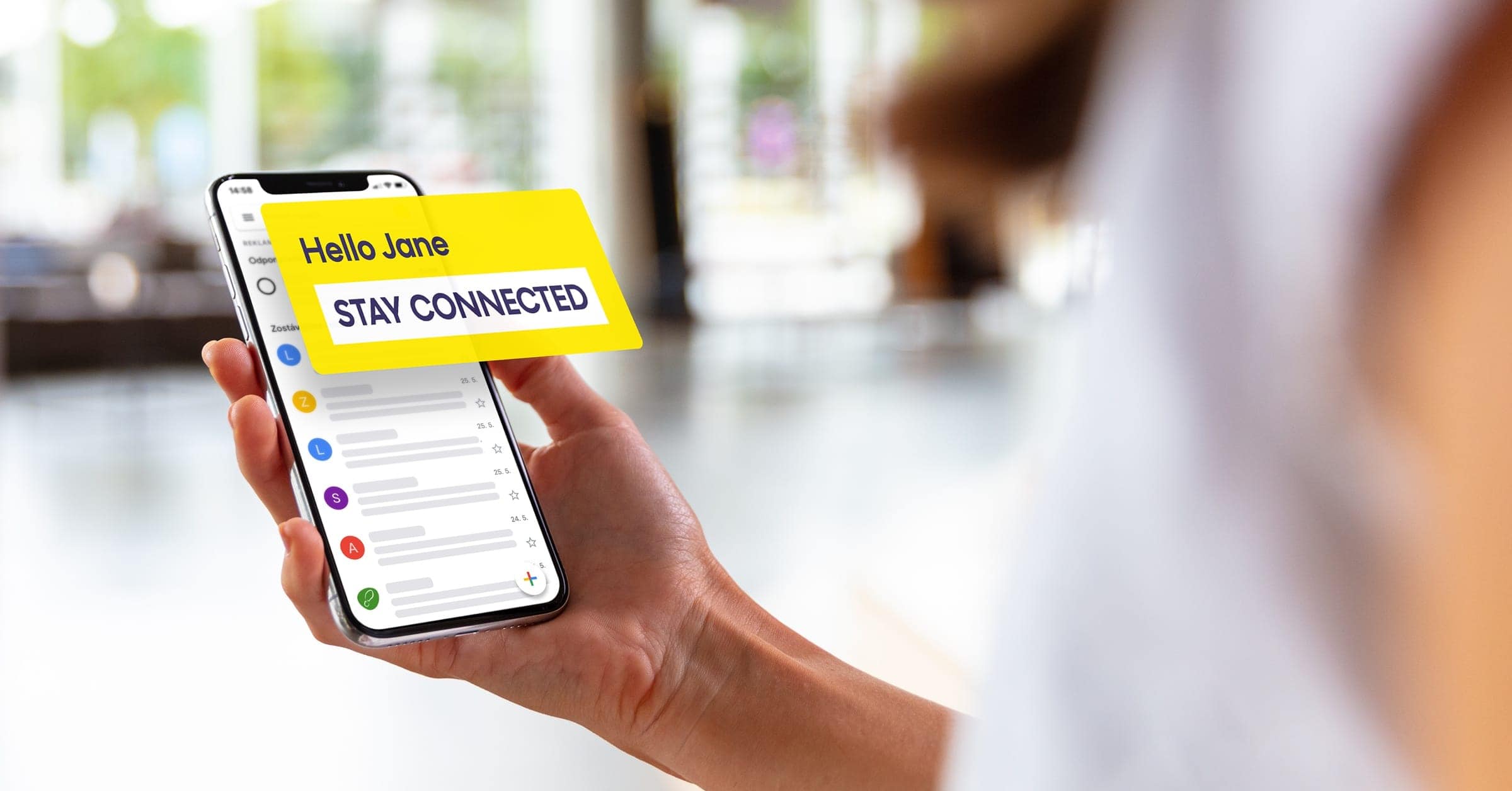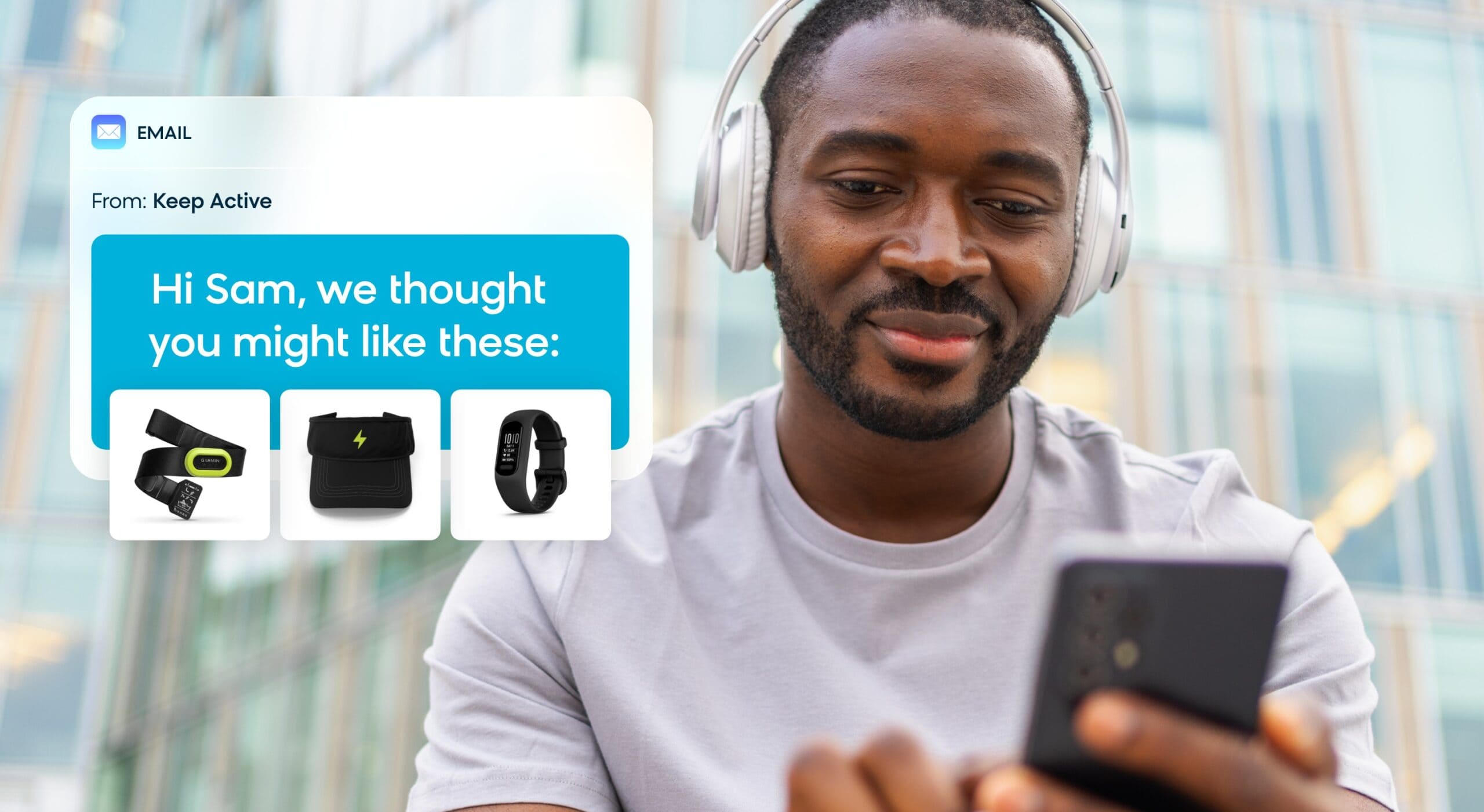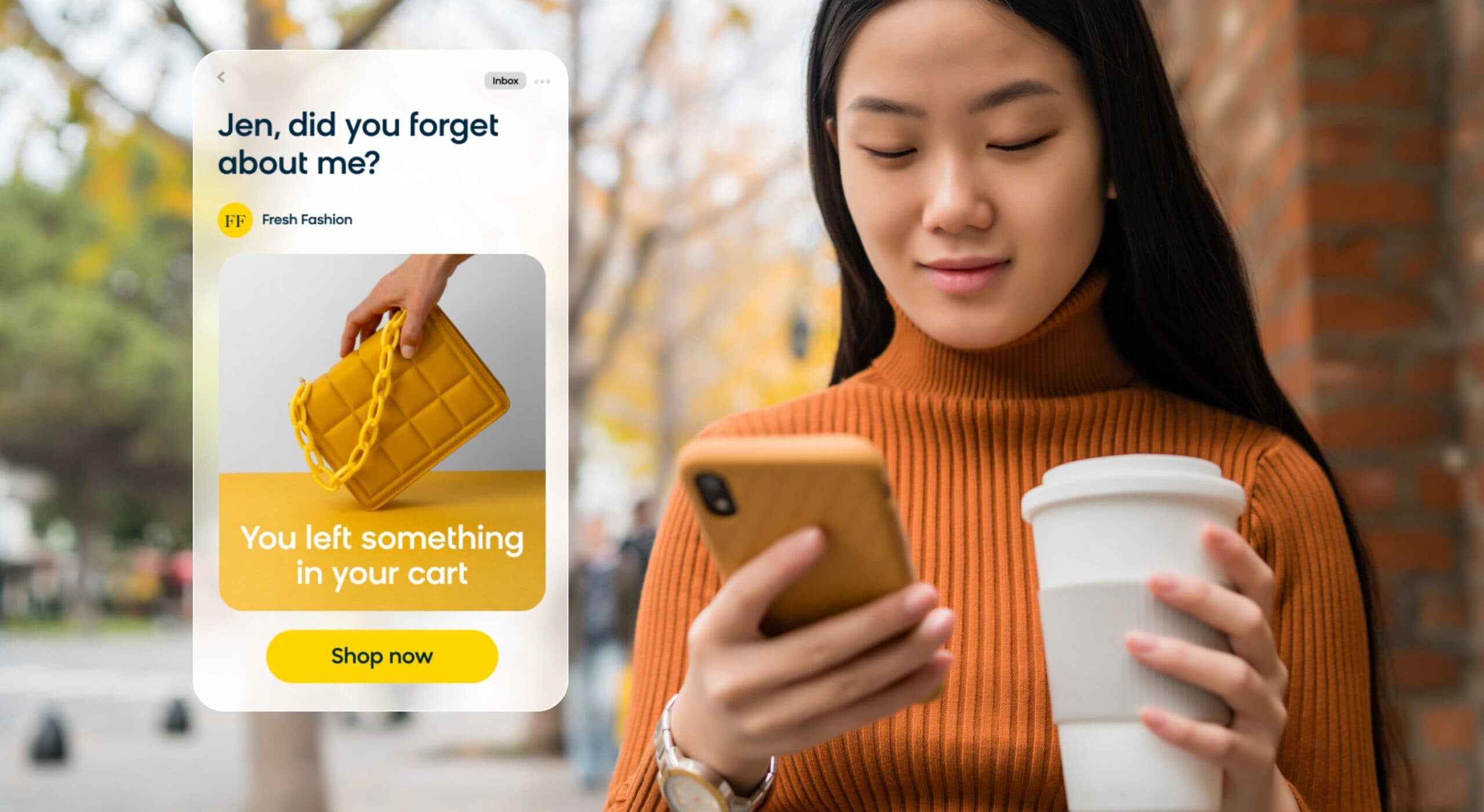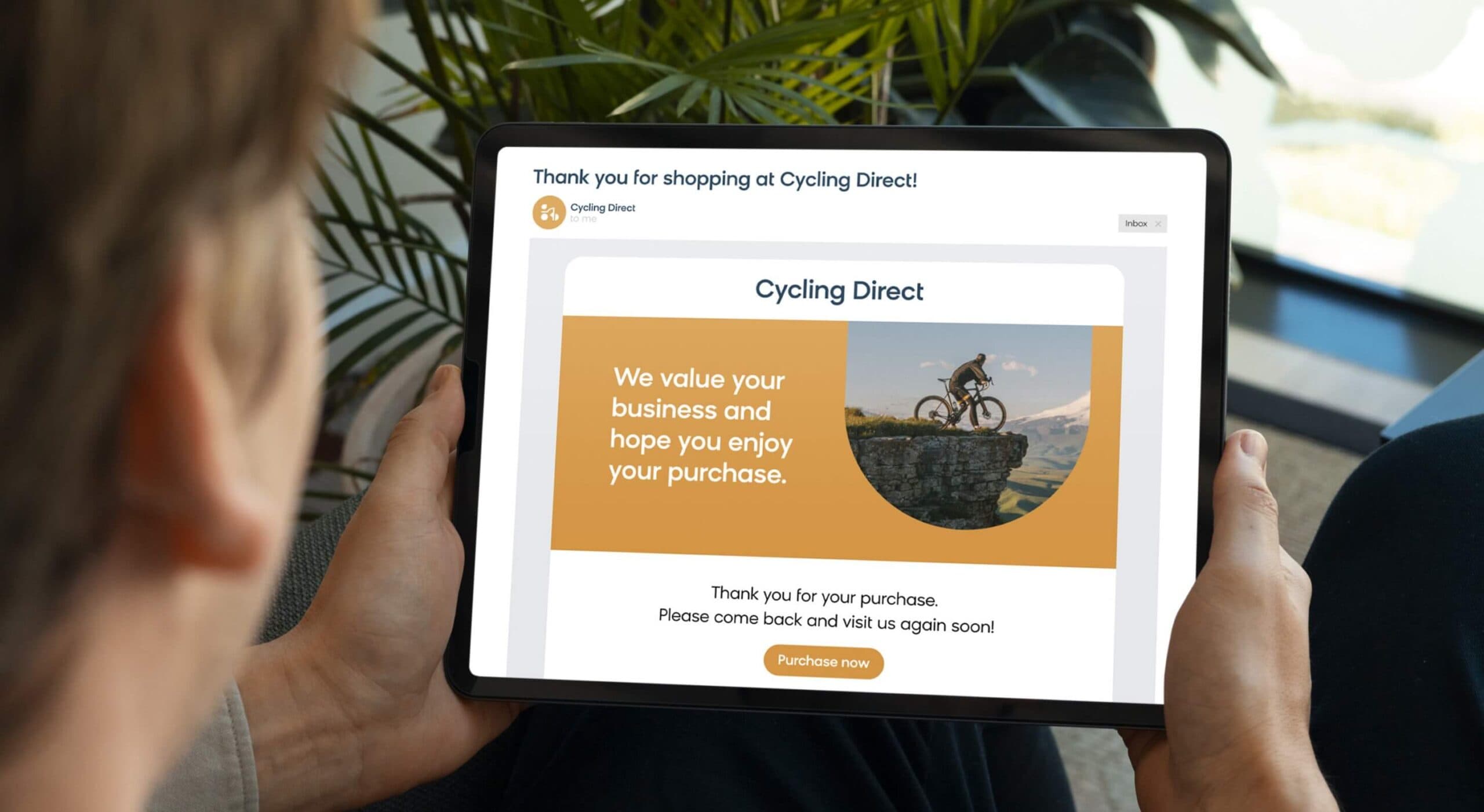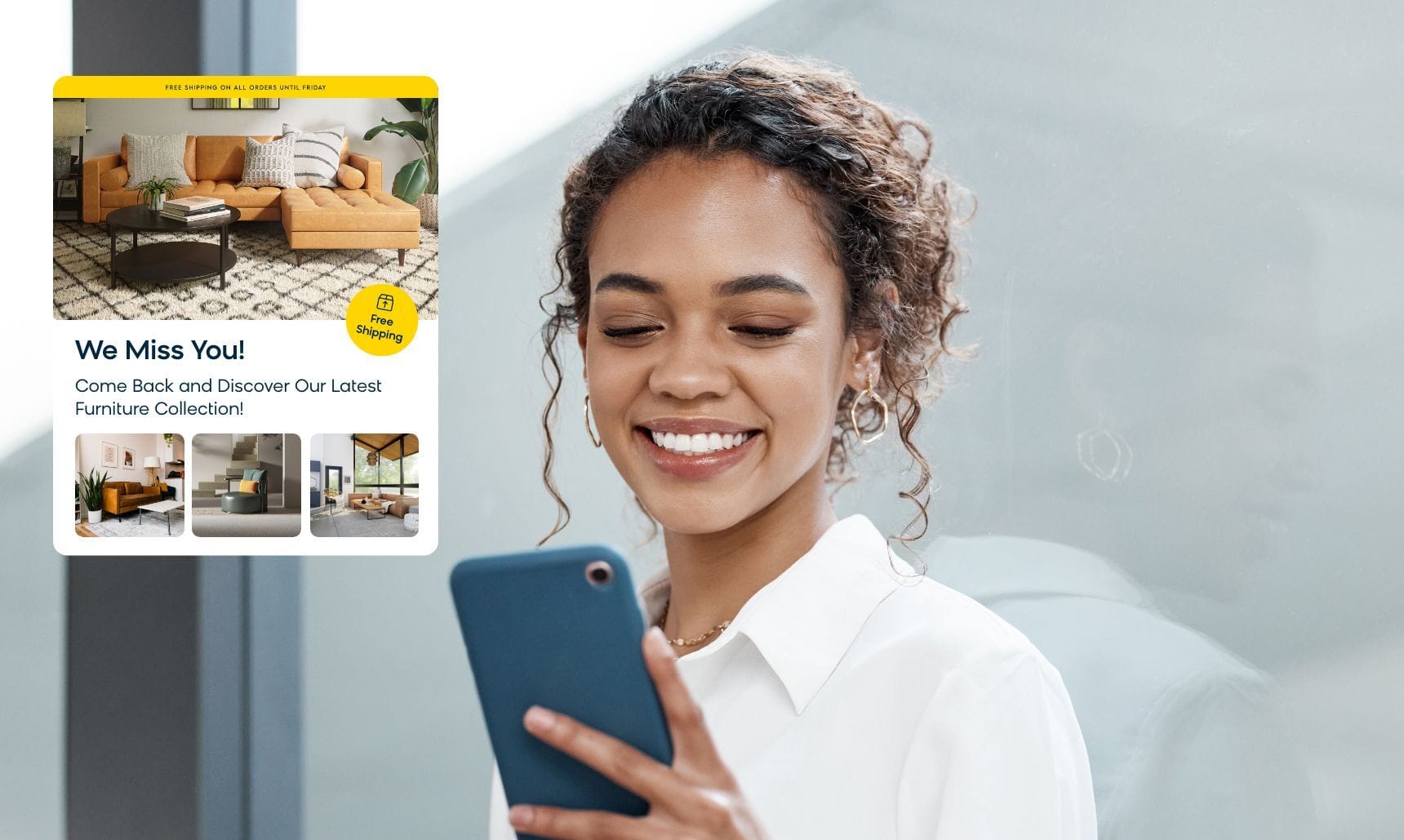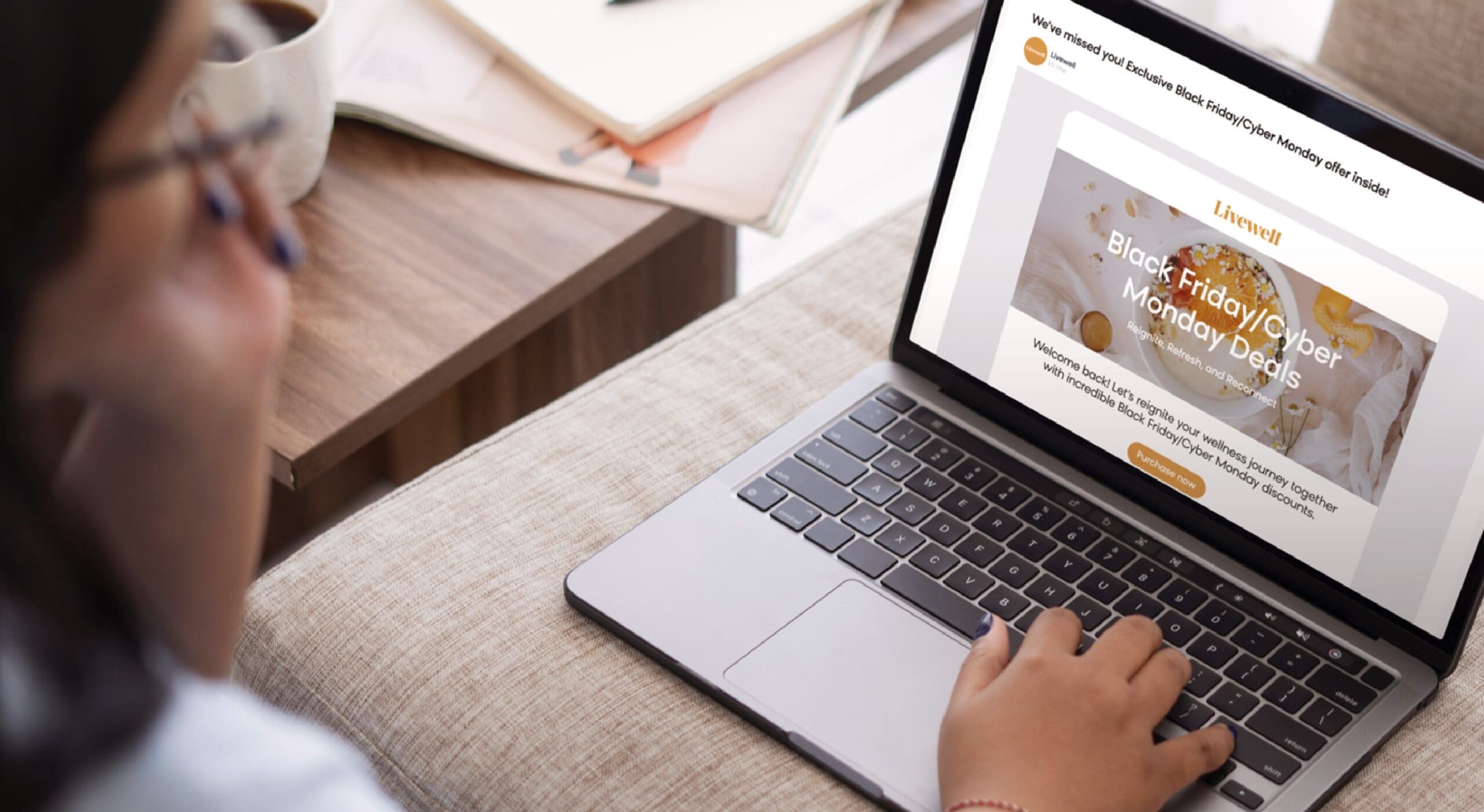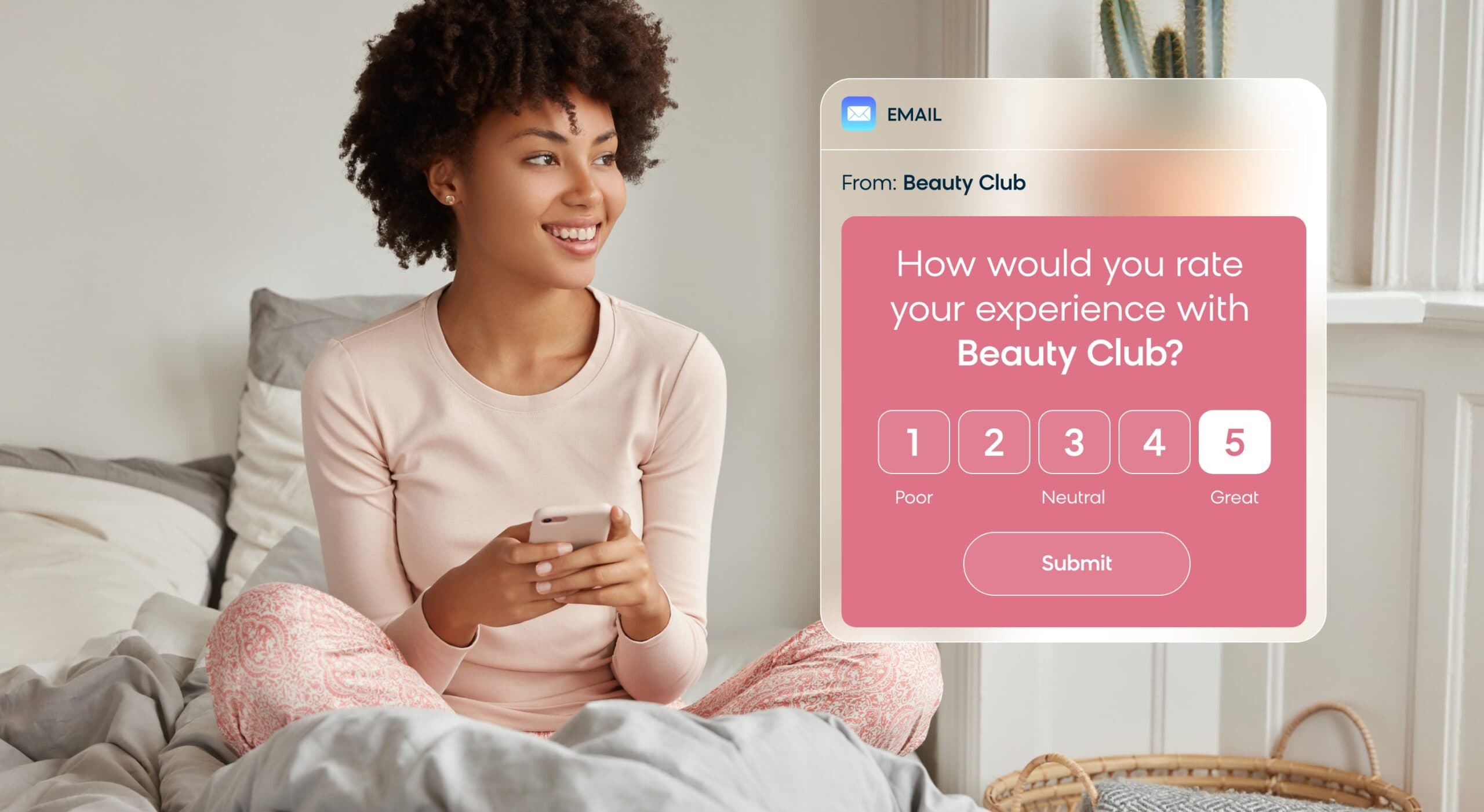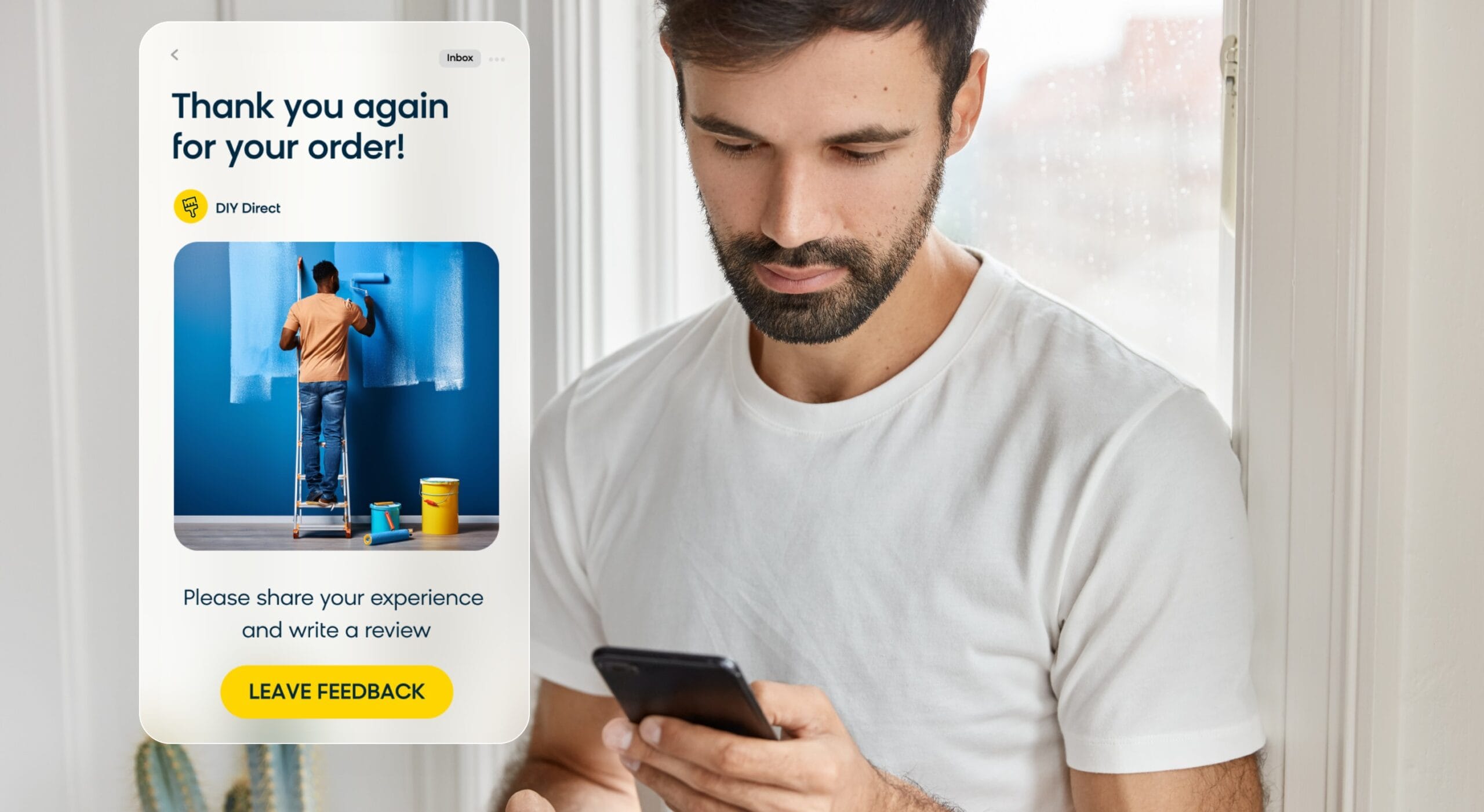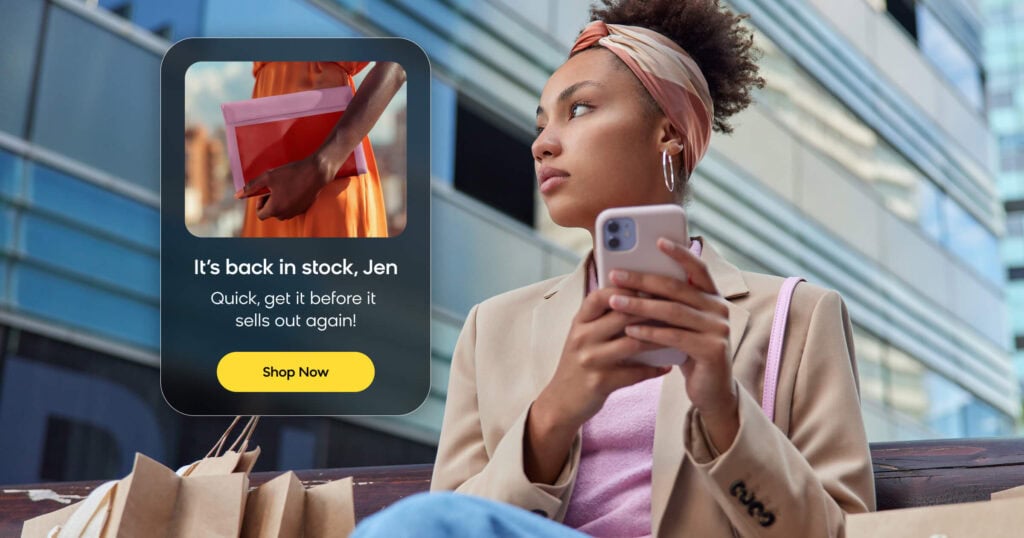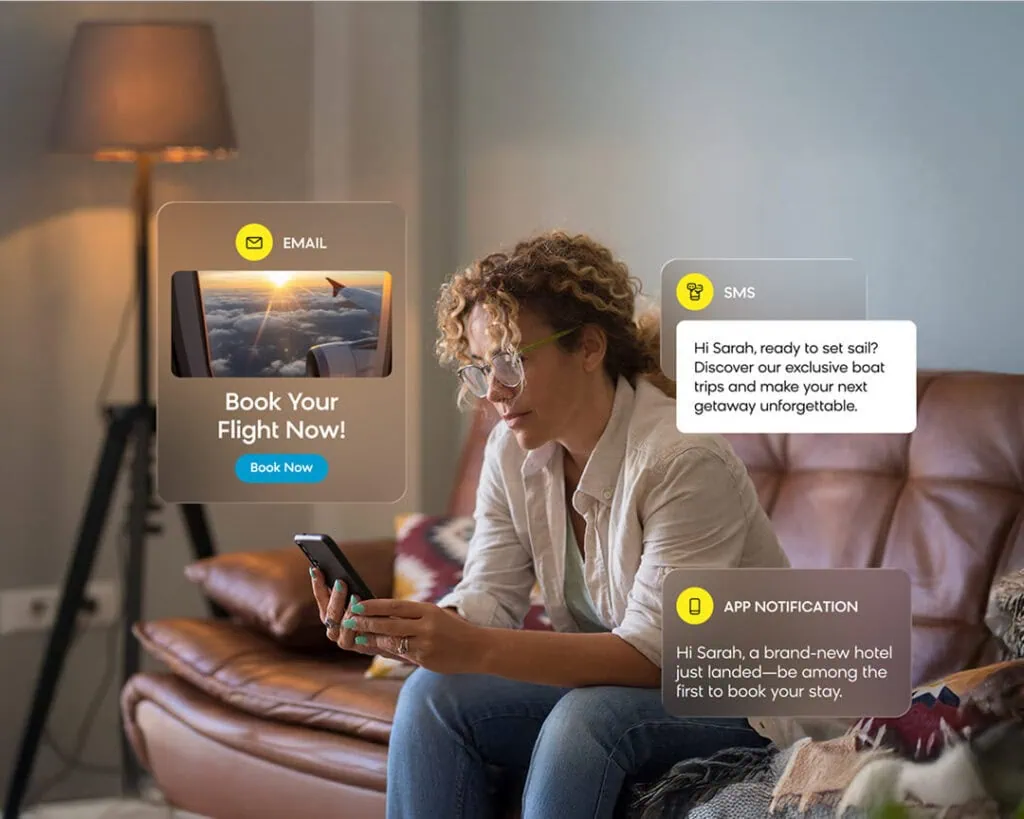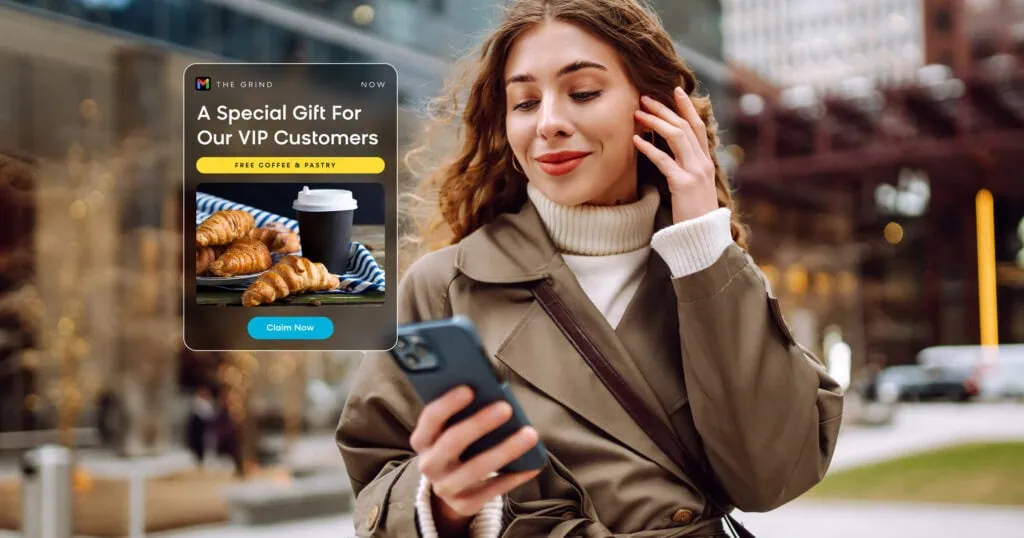By strategically implementing email flows, brands can engage customers at different stages of their journey, drive conversions, and build lasting relationships.
Keep reading to learn just how important email flows are and get a detailed look at eight sequences that every ecommerce brand should consider adopting for their email strategy in 2025.
What Are Ecommerce Email Flows?
Ecommerce email flows are sequences of emails triggered by specific customer actions, behaviors, or conditions. Using marketing automation, these flows are designed to guide customers through their shopping journey, from initial engagement to post-purchase communications.
With a prearranged journey that caters to your audience based on real-time triggers, specific behaviors, and timelines, your recipients receive a more personalized experience with each new email they engage with. This gives them an active role in orchestrating their customer journey and defining their personal experience with your brand.
The scenarios these flows create can serve a wide variety of purposes: introducing a subscriber to your brand with a welcome email, waiting a desired amount of time before following up on an abandoned cart, enticing a lapsed shopper to shop your sale with a special discount, and so much more.
Are Email Flows Effective To Use for Ecommerce?
Email marketing is one of the most lucrative and influential channels you can use for your marketing strategy, but your email campaigns are only as good as the shopping journeys they build for your audience.
Modern customers expect their journeys to be personalized with emails that cater to their unique needs. They expect each email they receive to be informed by their interactions with the last campaign, which is why automated email flows are so important.
Email flows turn your individual emails into connected experiences without the need to painstakingly construct new messages that accommodate each customer’s individual preferences. With a preset series of automated emails ready to be sent to your audience whenever they meet certain criteria, you can build efficient and effective campaigns.
This can lead to great results, including:
More Customer Engagement
Triggering campaigns based on specific user actions or predefined schedules can turn your campaigns into a conversation with your subscribers, with each new step in the email flow appealing to their unique preferences.
Increased Sales and Conversions
Automated email flows can play a major role in driving sales and increasing conversions. On average, automated flows generate 320% more revenue per recipient compared to standard email campaigns.
Building Customer Retention
Building long-term relationships with your subscribers is essential for email marketers, and email flows are great tools to build sustainable customer connections. The more focused your flows are on your customer’s needs, the more useful they can be at fostering loyalty and repeat business.
Reducing Cart Abandonment
Cart abandonment is a huge challenge in ecommerce — nearly 70% of online shopping carts are abandoned.
Thankfully, abandoned cart emails can go a long way toward getting those dropped sales back, and by building flows around these messages, you can further boost their effectiveness.
The benefits of thoughtfully planned email sequences is undeniable, but how exactly do you build a good email flow? What kind of triggers should you put in place, and what does an optimized timeline look like?
The answers to these questions will differ depending on your unique business, but there are certain types of email flows that every business can benefit from.
8 Examples of Email Flows for Ecommerce
Let’s dive into eight examples of ecommerce email flows, some conditions and triggers you should consider when building them, and how each flow could play out over time for your customers.
1. Welcome Email Flow
Automated welcome campaigns are great ways to greet new subscribers, introduce them to your brand, and set expectations for future communications.
Bloomreach’s welcome flow Plug & Play use case is a perfect example of a six-day welcome flow. It incorporates all the must-have triggers and conditions that make up a successful welcome campaign, including:
When to Trigger
Subscription to email list: Welcome email flows should be triggered when a customer subscribes to receive email communications from your brand.
Consent verification: Make sure your flow has consent verification built into the process. Confirming that the email address is valid and that the customer has given consent to receive emails is an essential step.
No previous welcome flow: To avoid repetitiveness, your sequence should have a step to ensure that the customer has not received a welcome flow campaign before.
Key Audience Segments
New subscribers represent your most engaged audience segment initially. Consider segmenting by signup source (website, social media, in-store) to personalize messaging. First-time visitors may need more brand education compared to existing customers who are subscribing for updates.
Success Metrics to Track
Monitor open rates (industry average: 50-60% for welcome emails), click-through rates (15-25%), and most importantly, conversion to first purchase within 30 days. Track unsubscribe rates to ensure your welcome sequence doesn’t overwhelm new subscribers.
Email Flow Sequence
Our welcome flow follows a proven email cadence:
- Email 1: An initial welcome email.
- Email 2: An email sent three days later highlighting unique selling points and educating your customer about what makes your brand special and why they should support your business.
- Email 3: A follow-up email sent three days later showing top-selling products or providing a discount code. If your recipient has made a purchase, you can showcase your popular and highly rated products. If they still haven’t purchased yet, you can offer a special discount to inspire that first purchase.
2. Product Recommendation Flow
Product recommendation emails are great tools for inspiring customer engagement. These emails rely on recommendation engines to serve products that your recipients are likely to enjoy, and they can be incorporated into automated flows using event-based triggers such as:
When to Trigger
Product views: Recommendation flows can be triggered when a customer views a product on your website, sending them similar products to view.
Purchase completion: An email can be triggered after a customer completes a purchase, sending complementary products for customers to consider.
Monthly sends: Product recommendations can easily be incorporated into recurring newsletter flows.
Key Audience Segments
Segment by purchase history, browsing behavior, and customer lifecycle stage. High-value customers may receive premium product recommendations, while new customers might see bestsellers or starter products. Consider demographic and geographic segments for seasonal relevance.
Success Metrics to Track
Track click-through rates on recommended products (target: 3-8%), revenue per email, and recommendation conversion rates. Monitor which recommendation types perform best (similar products, complementary items, or trending products) to optimize your algorithm.
Email Flow Sequence
The more personalized your product recommendations are, the more engagement your campaigns will receive. But even a simple, straightforward recommendation email flow can produce game-changing results.
Bloomreach Engagement’s automated newsletter for new items of interest use case is a great example of a simple and effective product recommendation flow. This use case can be set up in no time, creating a monthly email newsletter showcasing your brand’s most commonly viewed items in the last 30 days.
With a routine cadence and most sought-after products on display, this automated email flow is well worth the effort to capture your audience’s attention and bring them back to your brand.
3. Abandoned Cart Flow
Streamlining and automating your abandoned cart recovery campaigns is in every business’s best interest. Here are a few conditions to keep in mind when building your abandoned cart sequence:
When to Trigger
Cart updates: An email flow can be triggered when a customer adds items to their cart but does not complete the purchase.
Checkout page visits: A flow can also be triggered when a customer navigates to the checkout page but does not finalize the purchase.
Time of cart abandonment: It’s best not to send an abandoned cart email directly after a customer clicks away. Incorporating a waiting period is ideal, and you can even use AI to determine the perfect send time.
Key Audience Segments
Differentiate between first-time visitors and returning customers. New visitors may need trust signals and social proof, while returning customers might respond better to urgency or loyalty incentives. Consider cart value segments for different discount strategies.
Success Metrics to Track
Focus on recovery rate (industry benchmark: 15-25%), revenue recovered, and time to conversion. Track performance by cart value ranges and customer segments. Monitor unsubscribe rates to ensure your follow-up sequence isn’t too aggressive.
Email Flow Sequence
Using these conditions, your abandoned cart cadence might look like this:
- Email 1: A personalized abandoned cart email sent a few hours after a shopper leaves your site without completing a purchase.
- Email 2: A reminder email sent two days later emphasizing the items in the cart, possibly including a discount or special offer to incentivize a purchase.
- Email 3: A final email sent four days later about the abandoned cart, highlighting the urgency of item availability and encouraging customers to complete their purchase.
4. Post-Purchase Email Flow
Retaining customers is just as important as acquiring new ones, which is why post-purchase emails are so lucrative for businesses. They can deepen the customer relationship and turn one-time purchasers into longtime brand advocates.
Building a post-purchase email flow can take your customer relationship in a wide variety of different directions, but here are a couple of essential conditions to keep in mind when building your own sequence:
When to Trigger
Purchase completion: A post-purchase email flow should be triggered after a customer completes a purchase.
Previous email open rates: As your post-purchase flow progresses, your recipient’s engagement should inform their email cadence and content.
Key Audience Segments
Segment by purchase value, first-time vs. repeat customers, and product categories. High-value customers might receive VIP treatment and exclusive offers, while first-time buyers need onboarding and brand education to encourage repeat purchases.
Success Metrics to Track
Measure repeat purchase rate, customer lifetime value impact, and engagement rates across the sequence. Track support ticket reduction from proactive communication and monitor Net Promoter Score improvements from follow-up surveys.
Email Flow Sequence
Here’s a template you can use to build a post-purchase flow:
- Email 1: An order confirmation and thank-you email sent directly after a purchase.
- Email 2: A follow-up email sent two days later if the recipient opened the thank-you email. This email features product recommendations that complement their purchase.
- Email 3: If the recipient opens the follow-up email, an email is sent highlighting loyalty programs four days later to entice further purchases.
5. Reengagement Email Flow
Like post-purchase emails, reengagement flows can take on many different customer journeys. But no matter what you want your ideal shopping journey to look like, win-back emails can help you get straying customers back on track.
Reengagement emails incorporate many of the triggers outlined in examples above, but there’s one major condition that every winback flow should utilize:
When to Trigger
Inactivity period: Reengagement flows are usually triggered after a set period of time where a customer has not interacted with your brand. Constructing email flows based on inactivity over the span of 30, 60, or 90 days can help shape the right approach to win back their business.
Key Audience Segments
Segment inactive customers by their previous engagement level and purchase history. High-value inactive customers warrant more aggressive win-back efforts, while low-engagement subscribers might receive lighter touch campaigns or be moved to a separate list.
Success Metrics to Track
Monitor reactivation rates, click-through rates, and conversion back to purchase. Track list hygiene metrics like unsubscribes and deliverability improvements from removing truly inactive subscribers. Measure the impact on overall list engagement rates.
Email Flow Sequence
Here’s a blueprint you can use to start shaping your reengagement email flow:
- Email 1: An email reminding recipients of your brand and highlighting any new products, services, and updates.
- Email 2: A follow-up email sent one week later showcasing product recommendations based on categories that the recipient previously bought or viewed.
- Email 3: If no action is taken, a follow-up email is sent one week later with a special offer or discount to incentivize the customer to make a purchase.
6. Seasonal Promotion Email Flow
Big-name sales like Black Friday can be make-or-break events for businesses, which is why your email marketing strategy needs to be well-defined and focused on driving meaningful engagement.
To create an effective seasonal promotional email flow, you should consider incorporating any of the conditions covered so far, along with one specific trigger for this particular type of sequence:
When to Trigger
Seasonal events: This type of email flow is triggered by specific seasonal events, such as Black Friday, Christmas, spring, summer, or a flash sale. This can be tracked by setting a date-based trigger aligned with the seasonal promotion.
Key Audience Segments
Segment by past seasonal shopping behavior, preferred product categories, and engagement during previous promotional periods. VIP customers might receive early access, while bargain hunters get emphasized discount messaging.
Success Metrics to Track
Track promotional revenue, email-driven sales percentage, and campaign ROI. Monitor inventory movement for featured products and compare performance across different customer segments. Measure list growth during promotional periods for future campaigns.
Email Flow Sequence
Here’s a draft of an event-based promotional email flow you can work with:
- Email 1: An announcement email highlighting the promotion a week in advance, underscoring the key offers and creating excitement around the event.
- Email 2: A reminder email to shop the seasonal sale happening now, emphasizing limited-time offers and special deals.
- Email 3: A last-chance message telling the recipient that the promotion is about to end, possibly including a countdown timer to communicate a sense of urgency.
7. Feedback Request Email Flow
Customer feedback emails can provide valuable insights into your customer relationships and become beneficial touchpoints in a broader email flow, such as post-purchase sequences and reengagement campaigns.
Here are a few triggers that can help inform your feedback email sequence:
When to Trigger
Purchase completion: An email can be triggered after a customer completes a purchase.
Customer service interactions: A flow can be triggered following contact with a customer service representative.
Key Audience Segments
Target recent purchasers and customers who’ve had service interactions. Segment by purchase satisfaction indicators and customer tenure. Long-term customers might provide more detailed feedback, while new customers need simpler, shorter surveys.
Success Metrics to Track
Measure feedback response rates (target: 10-20%), Net Promoter Score improvements, and sentiment analysis results. Track how feedback leads to product or service improvements and monitor the impact on customer retention rates.
Email Flow Sequence
Feel free to work with this sequence as an initial design for your feedback request email flow:
- Email 1: A thank-you email sent directly after a customer makes a purchase.
- Email 2: A post-purchase feedback request email sent one week later that includes a link to a survey or feedback form.
- Email 3: A follow-up email sent one week later to recipients who have not yet provided feedback, emphasizing the importance of their input.
8. Product Review Request Email Flow
Similar to a customer feedback email flow, a straightforward and effective sequence of emails can be built to inspire your customers to write a product review.
When to Trigger
Use the same triggers as feedback requests: post-purchase completion and after adequate time for product use (typically 1-2 weeks depending on product type).
Key Audience Segments
Focus on satisfied customers based on previous feedback or lack of return/exchange requests. Segment by product type, as some items need more time for evaluation. Consider customer advocacy potential and past review behavior.
Success Metrics to Track
Monitor review generation rates, average star ratings from email-driven reviews, and the impact on product page conversion rates. Track how reviews influence future sales and overall brand trust metrics.
Email Flow Sequence
With the triggers and conditions discussed above, we can outline a review-focused flow that is as basic as it is productive:
- Email 1: A thank-you email sent directly after a customer makes a purchase.
- Email 2: A request to write a review for the purchased item sent one week later.
- Email 3: A follow-up email sent one week later to recipients who have not yet written a review, emphasizing the importance of their input.
How to Measure Email Flow Performance
Tracking the right metrics is essential for optimizing your email flows and maximizing ROI. Focus on these key performance indicators to understand how your automated sequences are performing:
- Open rates – Monitor email open rates by flow type, with welcome emails typically achieving 50-60% open rates and abandoned cart emails reaching 40-50%
- Click-through rates – Track clicks on your calls-to-action, aiming for 15-25% CTR on welcome flows and 10-15% on promotional sequences
- Revenue per email – Calculate the total revenue generated divided by emails sent to measure financial impact, with post-purchase flows often generating $0.50-$2.00 per email
- Conversion rates – Measure how many recipients complete desired actions, whether purchases, reviews, or feedback submissions
Industry benchmarks show that automated email campaigns generate 320% more revenue than one-off email blasts, making measurement crucial for demonstrating value. Advanced segmentation and personalization can improve these metrics by 20-30% over generic flows.
Email Flow Optimization Best Practices
Optimizing your email flows requires continuous testing, segmentation refinement, and personalization improvements to maximize engagement and conversions.
A/B Testing Your Email Sequences
It’s important to systematically A/B test different elements of your flows to improve performance over time.
Focus on testing subject lines, send times, email content, and call-to-action buttons across your sequences. High-impact tests are the best places to start, like welcome email subject lines or abandoned cart discount offers.
Implement a testing schedule where you evaluate one element per month, allowing sufficient data collection time. For example, test “Welcome to [Brand]!” versus “Your journey starts here” to see which generates higher open rates.
Advanced Segmentation Strategies
The audience for your campaign flows can make or break your success. Modern brands need to move beyond basic demographic segmentation to behavior-based and predictive segments for more relevant messaging.
Create targeted email audience segments based on purchase frequency, average order value, product categories, and engagement patterns. Implement dynamic segments that automatically update based on customer actions, such as moving high-value customers to VIP flows or adjusting send frequency for less engaged subscribers. Consider lifecycle stage segmentation to deliver appropriate messaging for new, active, and at-risk customers.
Personalization and Dynamic Content
Static, one-size-fits-all email campaigns can’t hold a customer’s attention for long. To keep audiences engaged, brands need adaptive email flows powered by personalization and dynamic content.
Leverage customer data to create highly personalized email experiences that resonate with your recipients. Serve product recommendations based on browsing history and past purchases, add personalized subject lines, and send location-based content for seasonal relevance.
With AI powering your email campaigns, you can tailor every aspect of your messages to meet each customer’s unique needs, personalizing your email cadence, send times, and content based on customer preferences.
Email Flow Implementation Checklist
Before launching your email flows, ensure you have these essential elements in place for maximum effectiveness:
- Audit your customer data – Verify data quality and completeness for accurate segmentation and personalization
- Set up proper tracking – Implement UTM parameters and conversion tracking for accurate performance measurement
- Create email templates – Design responsive templates that align with your brand guidelines and include clear calls-to-action
- Define trigger conditions – Establish clear criteria for when each flow should activate and deactivate
- Configure suppression lists – Set up exclusions to prevent customers from receiving irrelevant or duplicate messages
- Test all email sequences – Send test emails through complete flows to identify any technical issues or content gaps
- Establish monitoring procedures – Create dashboards and alerts to track performance and identify optimization opportunities
- Plan content updates – Develop a schedule for refreshing email content, offers, and seasonal messaging
Streamlined implementation with the right marketing automation platform can significantly reduce setup time while ensuring all technical requirements are properly configured.
Build and Implement Effective Email Flows With Bloomreach Engagement
Email flows like these can help businesses effectively engage with customers when and where it counts. You just need the right marketing automation platform to put your plans into action.
Bloomreach Engagement is the all-in-one marketing tool that can automate, optimize, and scale your entire email marketing strategy. Our solution brings together customer data, omnichannel automation, AI, and advanced analytics in a single platform, giving you everything you need to design personalized email marketing campaigns that will drive more revenue. What’s more, we make it easy for you to start anywhere and scale as your business grows.
Ready to see what Bloomreach can do for you? Explore Bloomreach’s welcome email automation features to learn more.

